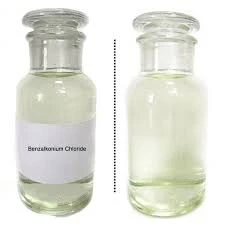polymaleic anhydride
Understanding Polymaleic Anhydride A Versatile Polymer
Polymaleic anhydride (PMA) is a synthetic polymer that has garnered attention in various fields due to its unique chemical properties and versatile applications. As a derivative of maleic anhydride, PMA exhibits a range of functionalities that make it ideal for use in a multitude of industrial processes, including pharmaceuticals, agriculture, coatings, and adhesives.
Chemical Structure and Properties
Polymaleic anhydride possesses a repeating unit of maleic anhydride, a compound known for its ability to undergo various chemical reactions. The repeating units provide PMA with a backbone that is not only rigid but also capable of forming strong intermolecular connections through hydrogen bonding. This property enables PMA to exhibit excellent thermal stability and mechanical strength, making it suitable for applications that require robustness and durability.
The anhydride groups present in the polymer chain can react with various nucleophiles, such as alcohols and amines, leading to the formation of esters and amides. This characteristic allows for the modification of PMA, tailoring its properties to meet specific application needs. Furthermore, PMA is soluble in polar solvents, which facilitates its incorporation into different formulations.
Applications in Various Industries
1. Pharmaceuticals PMA is utilized in the pharmaceutical industry due to its biocompatibility and ability to form complexes with drugs. It serves as a drug delivery vehicle, enhancing the solubility and bioavailability of poorly soluble pharmaceutical compounds. Additionally, its ability to form nanoparticles makes PMA a potential candidate for targeted drug delivery systems.
polymaleic anhydride

2. Agriculture In agriculture, PMA is used in the formulation of controlled-release fertilizers and pesticide delivery systems. Its ability to form stable complexes with nutrients or agrochemicals enables the gradual release of these substances, promoting more efficient usage and reducing environmental impact.
3. Coatings and Adhesives PMA’s versatility extends to the coatings and adhesives industry, where it is used as a binder or a modifier. Its excellent adhesion properties make it an ideal candidate for producing high-performance coatings that require durability and resistance to mechanical stress. Furthermore, PMA can enhance the properties of other materials when blended, resulting in improved performance characteristics.
4. Water Treatment PMA is also employed in water treatment applications. Its ability to chelate metal ions allows it to be used in the formulation of scale inhibitors and dispersants. By effectively managing scale formation, PMA helps in maintaining the efficiency of water systems, which is critical in industries such as power generation and oil extraction.
Environmental Considerations
While polymaleic anhydride presents numerous advantages across a variety of applications, it is also important to consider its environmental impact. As the emphasis on sustainability increases, research is ongoing to explore biodegradable alternatives to traditional PMA. The integration of renewable resources and the development of eco-friendly PMA formulations could potentially mitigate environmental concerns associated with synthetic polymers.
Conclusion
Polymaleic anhydride is a valuable polymer with diverse applications spanning pharmaceuticals, agriculture, coatings, and water treatment. Its unique properties make it an attractive choice for various industries looking to innovate and enhance product performance. As research continues to advance, the potential for PMA to contribute to sustainable practices in these fields will only grow, ensuring its relevance in modern applications. As we explore new frontiers in polymer chemistry, polymaleic anhydride undoubtedly stands out as a versatile and promising material.
-
Water Treatment with Flocculant Water TreatmentNewsJun.12,2025
-
Polymaleic AnhydrideNewsJun.12,2025
-
Polyaspartic AcidNewsJun.12,2025
-
Enhance Industrial Processes with IsothiazolinonesNewsJun.12,2025
-
Enhance Industrial Processes with PBTCA SolutionsNewsJun.12,2025
-
Dodecyldimethylbenzylammonium Chloride SolutionsNewsJun.12,2025





